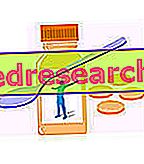The yawn is a reflection that consists of a deep inspiration followed by an equally generous exhalation. Although it is a particularly common gesture not only among men, but also among many animals, we still know little about the physiological mechanisms from which it originates.

But what are the physiological reasons why one is yawning? In this regard, numerous hypotheses have been advanced and it is very probable that this reflection derives from the integration of different stimuli. One of the first theories, remained in vogue for several years and supplanted by the latest research, suggested that the onset of the yawn was a way to increase the amount of oxygen in the body, in response to an excess of carbon dioxide in the blood. However, the hypothesis that yawning is a way to improve physical efficiency continues to be supported by several studies. One of these, by placing heating or cooling headgear on the heads of subjects intent on watching yawning videos, has come to the conclusion that yawning is a way to keep the brain temperature constant, preventing it from rising excessively. A similar conclusion has also been advanced by other authors, who argue that yawning is a way to regulate the temperature of the entire organism. Other theories concern the possibility that the yawn is a reflex triggered by the same neurotransmitters (primarily serotonin) which, acting in the brain, influence emotions, mood, appetite and other aspects of our life. There are also those who claim that yawning is a way to communicate apathy (hence the contagiousness of the gesture would arise), sharing the behavior and the physiological state of those around us. Others believe that this could be an unconscious reflection of imitation, which is the basis of human learning (as happens in the acquisition of language), or of a non-verbal communication tool to signal to the group members their state of fatigue, synchronizing the sleep-wake rhythms.
These and other theories, reported with their bibliographical references in the article yawning (wikipedia inglese), are a clear example of how complex are the physiological mechanisms that regulate the different bodily functions; for this reason, if you have not already done so while reading the article, the next time you miss a yawn you will most likely not dismiss it as a simple sign of fatigue.



